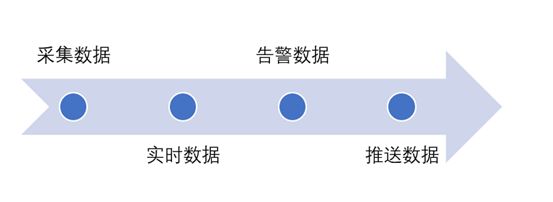前言
工业物联网是一个范围很大的概念,本文从数据可视化的角度介绍了一个最小化的工业物联网平台,从 Modbus 数据采集到前端数据可视化呈现的基本实现思路。这里面主要涉及基于 Modbus 通讯规约的数据采集、后台实时数据处理、前端实时数据接收、前端实时数据可视化显示。物联网平台架构主要参考了图扑物联工业物联网平台,并从中提取了部分功能进行介绍,前端数据可视化采用的是HT for Web。
由于内容比较多,具体实现上涉及到前端工程师、后台工程师、数据采集工程师等多个开发角色的参与,所以本文重点介绍实现思路和 WebSocket 消息推送的实现,其它环节的具体实现细节作者会在其它文章中进行详细介绍。
一、物联网平台架构
物联网平台主要是B/S模式,图扑物联工业物联网平台采用的是微服务架构,本文主要涉及两个微服务:前置数据采集服务和 Web 实时消息推送服务。
前置数据采集服务主要用于现场设备、仪器、仪表、传感器实时数据的采集,图扑物联工业物联网平台支持MQTT和透传云解析两种方式,透传云解析支持 Modbus 通讯规约。
实时数据采集到平台后,需要推送到浏览器端进行显示,Web 实时消息推送服务采用 Web Socket 进行实时数据推送,可以确保数据的实时性和高效性。
前端可视化技术采用的是HT for Web, HT for Web 是基于HTML5标准的企业应用图形界面一站式解决方案,其包含通用组件、拓扑组件和3D渲染引擎等丰富的图形界面开发类库。虽然 HT for Web 是商业软件但其提供的一站式解决方案可以极大缩短产品开发周期、减少研发成本、补齐我们在 Web 图形界面可视化技术上的短板。
二、Modbus 数据采集
Modbus是一种串行通信协议,是Modicon公司(现在的施耐德电气Schneider Electric)于1979年为使用可编程逻辑控制器(PLC)通信而发表。Modbus已经成为工业领域通信协议的业界标准,并且现在是工业电子设备之间常用的连接方式。Modbus比其他通信协议使用的更广泛的主要原因有:
- 公开发表并且无版权要求
- 易于部署和维护
- 对供应商来说,修改移动本地的比特或字节没有很多限制
Modbus允许多个 (大约240个) 设备连接在同一个网络上进行通信,举个例子,一个由测量温度和湿度的装置,并且将结果发送给计算机。在数据采集与监视控制系统(SCADA)中,Modbus通常用来连接监控计算机和远程终端控制系统(RTU)。
目前主流的编辑语言都有 Modbus 开发库,由于 Modbus 相对比较简单,很多企业也选择自行开发实现。Modbus 数据采集属于后台通讯,数据采集到平台后首先会进行数据清理和预处理,过滤掉冗余和无效数据,形成实时数据。平台获取到实时数据后一般会做 3 项工作:
1. 推送到 Web 前端进行显示
2. 存储到时序数据库
3. 判断是否产生告警
三、将实时数据推送到 Web 前端
基于 Web 的实时数据推送需要用到 WebSocket,初学者可以学习阮一峰老师的 WebSocket 教程。图扑物联的物联网平台基于 WebSocket 封装了一套消息传输协议,类似于一个消息中间件,前端部分可以订阅实时数据。考虑到海量实时数据的推送需求,将实时数据分为平台级、站点级、设备级,前端在订阅实时数据时,可以通过消息主题规则订阅不同级别的数据。平台侧在收到订阅请求时,可以主动推送一次实时数据。这样可以确保数据可视化界面在订阅实时数据成功后,第一时间显示出正确的界面。
下面给出一个简化的 WebSocket 消息协议的客户端代码,大家可以在些基础上进行改造以适合自己的业务场景。
消息主题正则表达式,用来匹配消息主题:
1 const matchWildcard = function(str, rule) {
2 return new RegExp('^' + rule.split('*').join('.*') + '$').test(str)
3 }WebSocket 客户端,支持消息主题订阅、取消消息主题订阅、同一个消息主题支持多个订阅者:
class WebSocketClient {
constructor() {
this.ws = null
this.opts = {
debug: false,
autoReconnect: true,
reconnectInterval: 10000,
subscriber: {},
}
this.opened = false
}
connect() {
if (!this.opened) {
return
}
const url = 'ws://www.iotopo.com/msg/v1'
console.debug('websocket connect', url)
let ws = this.ws = new WebSocket(url)
ws.onmessage = event => {
if (this.opts.debug) {
console.log(event)
}
let data = JSON.parse(event.data)
for (let topic in this.opts.subscriber) {
if (matchWildcard(data.topic, topic)) {
let listeners = this.opts.subscriber[topic]
if (Array.isArray(listeners)) {
listeners.forEach(cb => {
if (typeof cb === 'function') {
cb(data.payload)
}
})
}
}
}
}
ws.onopen = e => {
if (this.opts.debug) {
console.log(e)
}
// 执行订阅请求
for (let topic in this.opts.subscriber) {
this._sendSubscribe(topic)
}
if (typeof this.opts.onopen === 'function') {
this.opts.onopen(e)
}
}
ws.onclose = e => {
if (this.opts.debug) {
console.log(e)
}
if (typeof this.opts.onclose === 'function') {
this.opts.onclose(e)
}
if (this.opened && this.opts.autoReconnect) {
setTimeout(() => {
this.connect()
}, this.opts.reconnectInterval)
}
}
ws.onerror = e => {
if (this.opts.debug) {
console.log(e)
}
if (typeof this.opts.onerror === 'function') {
this.opts.onerror(e)
}
}
}
open(opts) {
if (!this.opened) {
Object.assign(this.opts, opts || {})
this.opened = true
this.connect()
}
}
close() {
this.opened = false
if (this.ws !== null) {
this.ws.close()
}
this.ws = null
}
isOpened() {
return this.opened
}
isConnected() {
return this.ws !== null
}
_sendSubscribe(topic) {
if (this.ws === null) {
return Error('websocet not opened')
}
if (typeof topic !== 'string') {
return Error('topic should be a string value')
}
if (this.ws.readyState === WebSocket.OPEN) {
let msg = {
type: 'subscribe',
topic: topic,
}
this.ws.send(JSON.stringify(msg))
} else {
return Error('websocet not connected')
}
}
subscribe(topic, cb) {
if (this.opts.debug) {
console.log('subscribe:', topic)
}
let listeners = this.opts.subscriber[topic]
if (!Array.isArray(listeners)) {
listeners = [
cb
]
this.opts.subscriber[topic] = listeners
} else {
listeners.push(cb)
}
this._sendSubscribe(topic)
return { topic, cb }
}
unsubscribe({topic, cb}) {
if (this.opts.debug) {
console.log('unsubscribe:', topic)
}
if (this.ws === null) {
return Error('websocet not opened')
}
if (typeof topic !== 'string') {
return Error('topic should be a string value')
}
let listeners = this.opts.subscriber[topic]
if (cb) {
if (Array.isArray(listeners)) {
let idx = listeners.indexOf(cb)
if (idx >= 0) {
listeners.splice(idx, 1)
}
}
} else {
delete this.opts.subscriber[topic]
}
if (Array.isArray(listeners) && listeners == 0) {
if (this.ws.readyState === WebSocket.OPEN) {
let msg = {
type: 'unsubscribe',
topic: topic,
}
this.ws.send(JSON.stringify(msg))
} else {
return Error('websocet not connected')
}
}
}
}用法举例:
// 初始化客户端
const ws = new WebSocketClient()
// 与 WebSocket 服务器建议连接
ws.open({
debug: false
})
// 订阅消息
ws.subscribe('/foo/bar/*', function(msg) {
console.log('recv ws msg:', msg)
})四、数据可视化界面实现
基于 HT for Web 可以简单快速地搭建一个符合 HTML5 标准的可视化图形界面,通过 WebSocket 订阅实时数据,然后驱动图形界面的变化。数据驱动图形界面变化的实现方式很多,基本方法是采用数据绑定的方式,具体可以参考 HT for Web 的官方文档。
在后面的文章中,作者会介绍一种基于 HT for Web 实现的业务数据和图形数据分离的数据绑定方法,这也是图扑物联的物联网平台采用的方式。
在线演示地址



